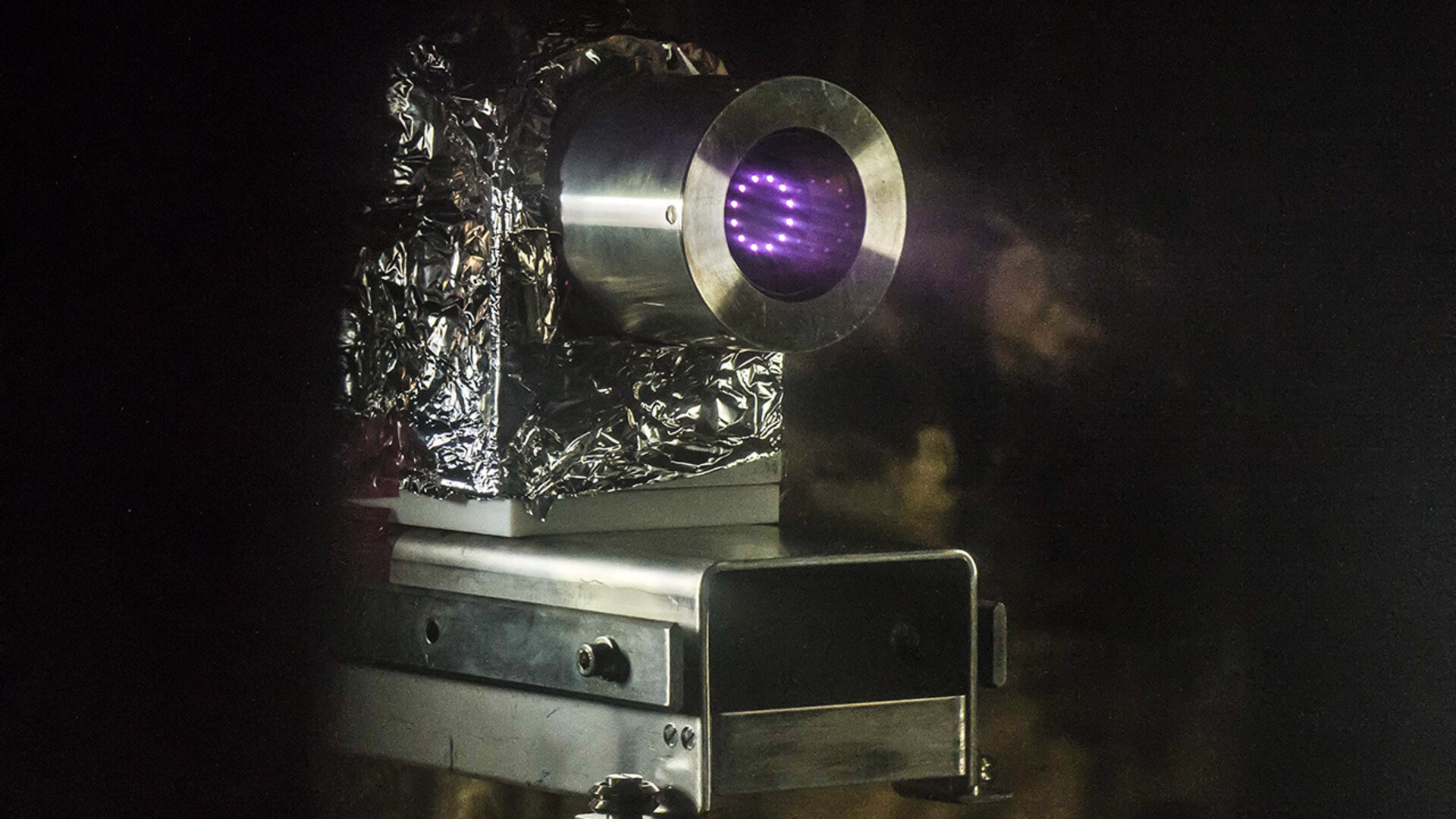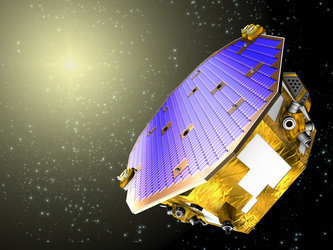Fine control from miniature thruster
The faint purple glow comes from one of ESA’s very smallest space thrusters, being tested in a vacuum chamber in the Agency’s propulsion laboratory.
This espresso-cup-sized Radio-frequency Ion Thruster, or miniRIT, delivers steady thrust in the range 10–100 micronewtons, equivalent to the force exerted by a few grains of sand.
Thanks to its very high efficiency, with radio waves accelerating electrically charged atoms, the miniRIT would take years to consume only a few kilograms of propellant to provide fine attitude and orbit control for advanced science and Earth observation satellites.
It would even be capable of compensating for the faint but persistent push of sunlight itself, allowing a satellite to remain truly ‘still’ in space.
The engine was tested during the second half of May in the Propulsion Lab of ESA’s ESTEC technical centre in Noordwijk, the Netherlands. It was developed by Astrium in Germany, Selex Galileo in Italy and Nanospace in Sweden.
The miniRIT is a miniaturised version of the RIT carried by ESA’s Artemis satellite since 2001, which distinguished itself by saving the mission after it was launched into too low an orbit. Some 6300 hours of continuous firing hauled Artemis up into its planned geostationary orbit.
The miniRIT was originally developed in association with ESA’s LISA Pathfinder mission – demonstrating technologies for future gravitational wave detection – although that mission is now set to employ simpler cold-gas thrusters instead.
The aim of the current testing is to show the miniRIT has reached a level of technology readiness where it can be taken up by other future missions requiring very high positioning accuracy.






